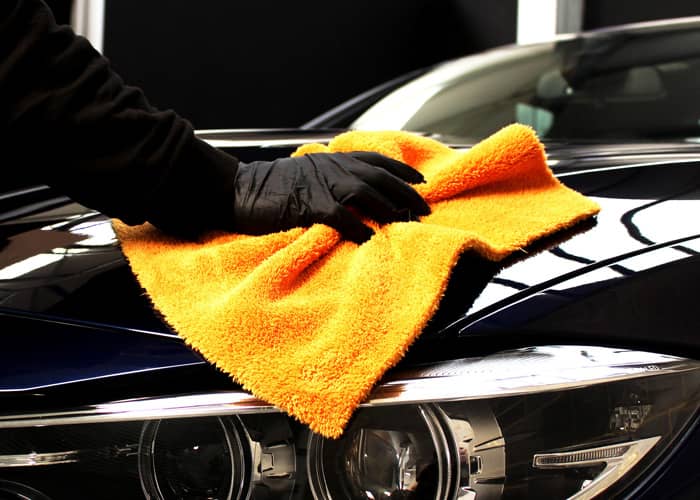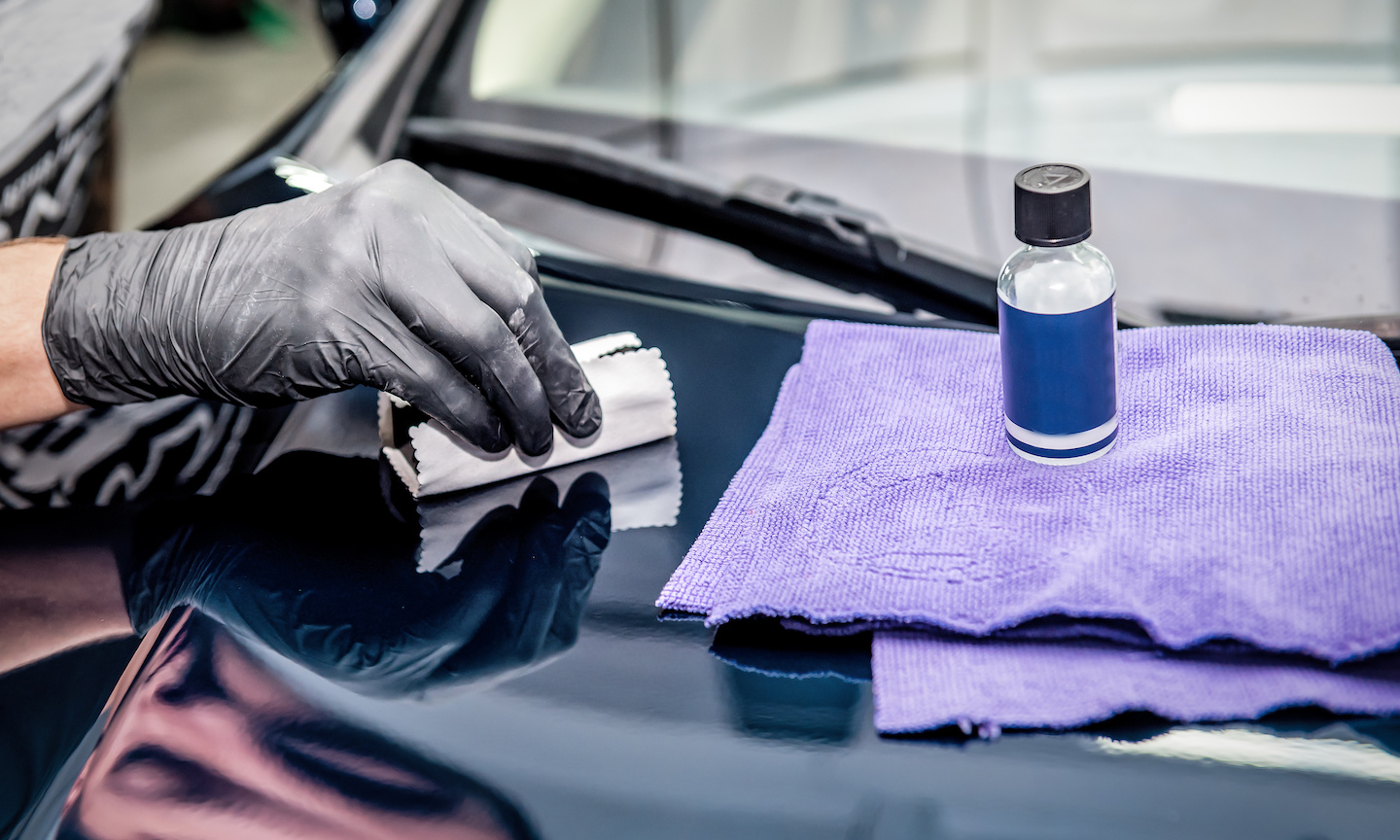Enjoy Long-Lasting Gloss with Conforti Auto and Marine Detailing Ceramic Coating Services
Enjoy Long-Lasting Gloss with Conforti Auto and Marine Detailing Ceramic Coating Services
Blog Article
How Outlining Porcelain Layer Improves the Longevity of Your Auto's Paint
Ceramic coating has arised as an essential modern technology in automotive detailing, using a long-lasting solution for preserving the stability of your automobile's paint. Comprehending the ins and outs of just how ceramic covering works and its advantages over conventional wax can supply beneficial understandings for car proprietors.
What Is Ceramic Coating?
Understanding the safety benefits of ceramic covering begins with recognizing its composition and functionality. Ceramic finishing is a fluid polymer put on the exterior surfaces of cars, mainly developed to improve and safeguard automotive paint. The key component of this layer is silicon dioxide (SiO2), which is stemmed from natural products like sand. This substance develops a strong chemical bond with the manufacturing facility paint, producing a protective layer that is both durable and hydrophobic.
The finish's application entails thorough preparation of the vehicle's surface, which need to be devoid of contaminants, scratches, and blemishes to make sure optimal bond. Once used, the ceramic covering treatments to form a rigid guard that can endure numerous ecological factors, including UV rays, chemical spots, and oxidation.
Furthermore, ceramic coatings are not simply surface-level therapies; they permeate the paint to give a long-term defense. This performance prolongs the life-span of the car's visual appeals while keeping its worth gradually. Comprehending these basic aspects of ceramic finish is important for cars and truck proprietors looking for reliable remedies for paint preservation and improvement.
Advantages of Ceramic Layer
The advantages of ceramic layer expand far beyond its basic protective attributes - Conforti Auto and Marine Detailing Ceramic Coating. Among one of the most considerable benefits is its capability to give outstanding resilience. Unlike traditional wax or sealants, ceramic finishes produce a solid bond with the car's paint, allowing it to hold up against environmental dangers such as UV rays, acid rainfall, and roadway salt. This resilience substantially minimizes the danger of paint damage, maintaining the automobile's aesthetic charm.
Furthermore, ceramic finishings offer hydrophobic residential or commercial properties, suggesting they repel water and impurities. This characteristic not only makes the car easier to tidy yet additionally reduces the regularity of washing, saving both effort and time for vehicle proprietors. The slick surface area created by the layer stops dust and gunk from sticking, enhancing the auto's general sanitation.
In addition, ceramic finishes improve the depth and quality of the paint, giving automobiles a shiny coating that is visually striking. This aesthetic enhancement additionally adds to preserving the automobile's resale value, as a well-maintained outside is a significant selling point for prospective buyers. Overall, the benefits of ceramic finish make it a worthwhile investment for any individual wanting to shield and enhance their car's paintwork.
Exactly How Ceramic Layer Functions

The finishing's hydrophobic residential properties push back water and dust, avoiding the build-up of gunk on the surface. This not only makes the vehicle simpler to clean however additionally lowers the chance of scrapes and swirl marks triggered by standard cleaning methods. The ceramic layer acts as a guard against UV rays, which can create fading and oxidation over time.
Once healed, the finish displays remarkable resistance to chemicals, consisting of road salts, bird droppings, and tree sap, which can or else damage the paint. The long life of ceramic finishes can last for several years, depending on elements such as maintenance and ecological conditions. Generally, the chemical bonding process of ceramic finishes supplies a robust defense that maintains the integrity and look of a vehicle's paintwork.
Contrasting Ceramic Layer to Wax
Comparing ceramic finish to conventional wax discloses considerable distinctions in efficiency and long life. While both products aim to shield a car's paint, their dig this make-ups and toughness her explanation set them apart. Wax, commonly made from all-natural carnauba or artificial materials, supplies a short-lived guard that typically lasts only a few weeks to a couple of months, depending on ecological conditions and maintenance routines.
In comparison, ceramic finishes are advanced solutions made up of not natural products that bond chemically with the vehicle's paint. This creates a robust, semi-permanent layer of protection that can sustain for numerous years. Consequently, ceramic coverings supply remarkable resistance to UV rays, chemical spots, and physical abrasion, considerably minimizing the risk of oxidation and fading.
Furthermore, the hydrophobic homes of ceramic coatings make certain that water beads up and rolls off the surface, making it more difficult for dirt and crud to adhere. This simplicity of cleansing is a remarkable benefit over wax, which can bring in dirt and require constant reapplication. Inevitably, for cars and truck proprietors looking for durable security and enhanced aesthetic appeal, ceramic coverings offer a more effective alternative to standard wax items.
Upkeep Tips for Durability
Appropriate maintenance is vital for making best use of the durability of a ceramic coating. Make use of a pH-balanced vehicle hair shampoo to stop degrading the finish, and prevent automatic vehicle cleans with severe brushes that can create micro-scratches.
To keep the hydrophobic residential properties of the ceramic covering, consider applying an upkeep spray or booster specifically designed for ceramic coverings every couple of months. This will certainly strengthen the protective layer and enhance water beading.
In addition, prevent subjecting the coated surface to severe ecological conditions whenever feasible. Auto parking in shaded locations or making use of an auto cover can avoid UV damage and contamination from bird droppings, tree sap, or industrial after effects.
Finally, examine the finishing regularly for indications of wear or damages. If you observe a decrease in hydrophobic behavior, it might be time for a professional reapplication. By adhering to these maintenance suggestions, automobile proprietors can substantially extend the life and effectiveness of their ceramic finishing, making certain that their auto's paint remains safeguarded and aesthetically appealing for many years to find.
Final Thought

Report this page